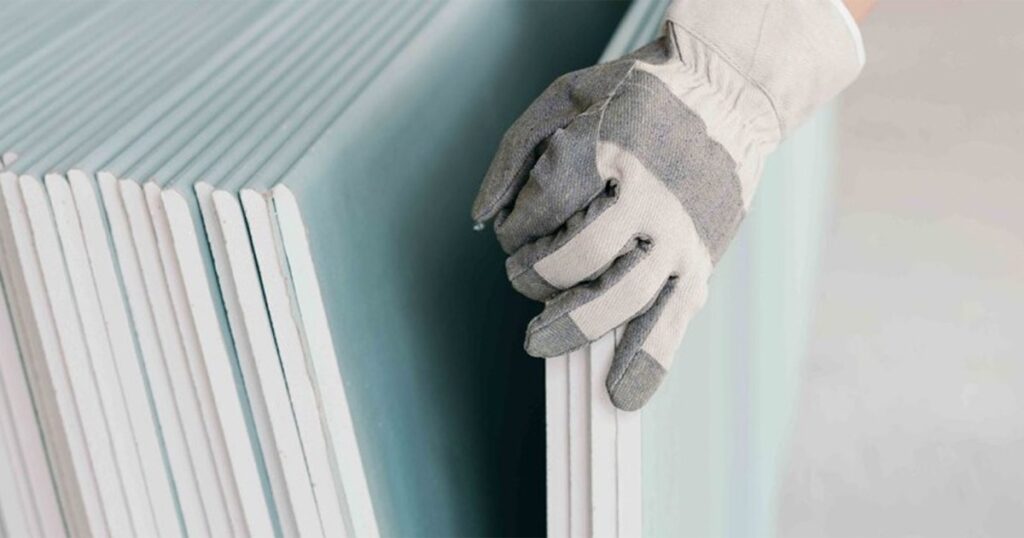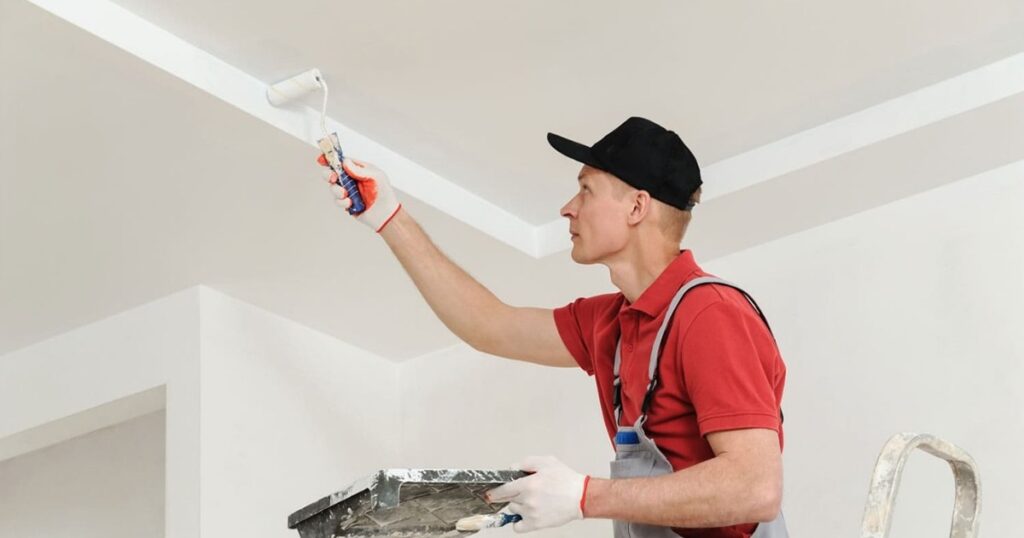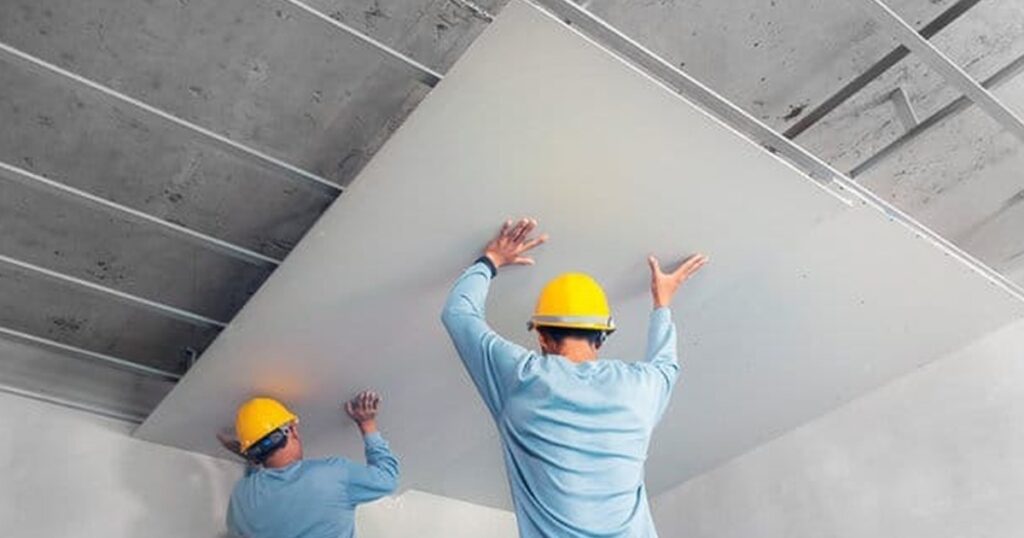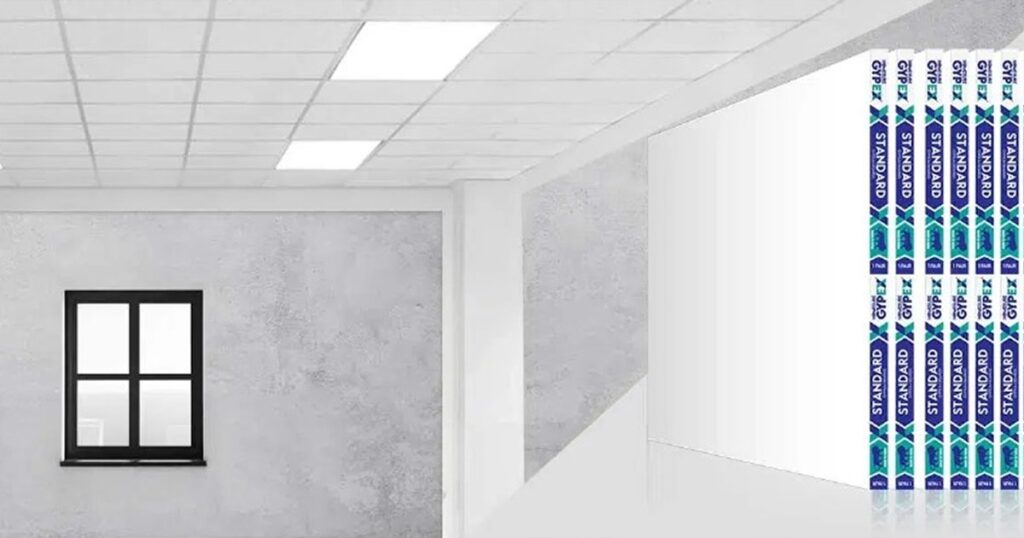
The influx of technological advancements has introduced several new building materials. Although gypsum boards are not a new innovation, they have recently gained increased traction in the construction industry.
Gypsum boards are commonly used for building lightweight, durable walls and ceilings. As the construction industry moves toward reducing its environmental impact, gypsum boards have emerged as an eco-friendly building material that supports this goal.
Let’s explore what gypsum boards are and how they impact the environment.
What is a gypsum board?

Commonly referred to as drywall or plasterboard, gypsum boards consist of a gypsum core sandwiched between layers of paper. Their inherent fire resistance and soundproofing qualities make them a top choice for walls, ceilings, and partitions. Additionally, their ease of installation has made them highly popular among builders.
Properties of gypsum boards

The construction industry is slowly adapting sustainable building materials and trends to have a position environmental impact. This is why gypsum boards are an excellent choice. Some of the main qualities of gypsum boards are:
- Low emissions: Gypsum production requires significantly lower calcination temperatures compared to lime and cement-based materials, leading to reduced fuel consumption and minor CO2 emissions.
- Fire resistance: Gypsum consists of crystallised water which greatly contributes to its effectiveness as a fire-resistant barrier. When a plasterboard comes in contact with fire, calcination is initiated. The water starts to dissipate as water vapour, effectively slowing heat transfer. This property has made gypsum boards a staple in modern sustainable buildings.
- Structural integrity: The lightweight composition of gypsum plasterboards combined with their inherent strength makes them an ideal material for building strong structures. Its structural property ensures that buildings are stable over time.
- Acoustic property: The thick composition of gypsum makes it an effective barrier against transmission of sound. The mass and thickness of gypsum boards minimise sound vibrations, creating a quieter space. This is one of the main reasons why these boards are used in the interiors – to reduce the transmission of noise between rooms.
- Moisture resistance: Many gypsum boards – like the one by Walplast – are water-resistant. Such plasterboards can be used in areas such as bathrooms, kitchens, and basements. By effectively repelling water gypsum boards increase the durability and longevity of interior structures. Such boards are used in areas with high moisture or water exposure.
- Smooth surface: Gypsum provides a smooth surface for making finishes. The flat and even surface serves as a blank canvas which can be decorated in many ways. This helps in increasing the aesthetic appeal of a space.
Benefits of using gypsum boards

There are several advantages of using gypsum boards in construction. Here are a few of them:
- Versatile: These boards can be customised to achieve various architectural requirements. They are adaptable to all forms of decorations and are easy to apply and repair.
- Easy installation: The installation of gypsum boards is quick and straightforward. Only a few tools, such as nails, screws, and staples, are needed to fasten the boards, though they can also be attached with adhesive. Due to their lightweight nature, labour costs are significantly reduced.
- Easily manageable: Gypsum plasterboards don’t require additional finishing. You just simply need to install them and the job is done. This helps in saving a lot of time.
- Reduced cracking: Gypsum has high tensile strength and, therefore can withstand pulling force and compression. Plasterboards are not brittle, making them less resistant to cracking. Also, it does not warp in moisture like wood, so it can resist seepage damage as well.
- Superior insulation: Gypsum offers high-grade thermal insulation and can help save energy. A layer of air is trapped in between the plasterboards which offers better insulation – meaning less cooling and heating is required. This causes substantial energy savings.
- Economic: Gypsum plasterboards are available in various sizes and are relatively cheaper for wall surfacing and ceiling covering material. Installation or labour costs are much lower.
GypEX: Gypsum Board by Walplast

Gypsum is a naturally occurring mineral that is abundant, and easily accessible. At Walplast, we use 100% naturally occurring gypsum in our GypEX boards. These boards are encased in eco-friendly, strong paper lining. These boards have brown paper on the back, ivory paper on the front and blue or multicoloured tape on the edge.
GypEX gypsum boards can be used without plaster of walls or ceilings. It provides a suitable surface for painting or decoration.
The manufacturing process produces minimal waste. No synthetics are used for fabricating these plasterboards, making them environmentally friendly. These plasterboards are also termite and mold resistant making them a great option for humid areas.
Another factor that adds to the sustainability of GypEX plasterboards is that these boards are reusable. This helps reduce energy lost in manufacturing and disposal. It is made using only eco-friendly additives and fillers that pose no serious health threats.
Our goal is to make a positive impact on the environment with our products and promote sustainable buildings. These non-toxic gypsum boards have a minimum carbon footprint, changing the trajectory of the construction sector.
Summing up

The construction industry is adopting sustainable building materials and trends that will have a positive impact on the environment. Walplast gypsum boards are an eco-friendly building material, widely used in the sustainable construction of buildings. It is used for creating safe and sustainable buildings.
Check out the GypEX boards by Walplast for creating new buildings and also in restoration processes. Get in touch with us today!
